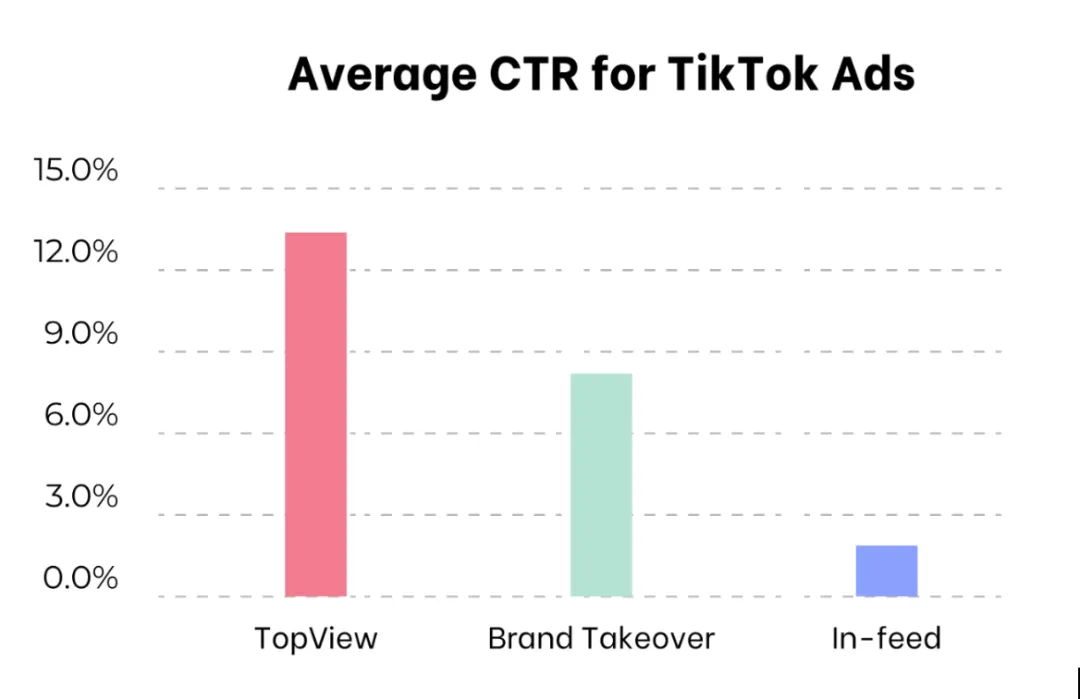Table of Contents
In the rapidly evolving world of digital marketing, click-through rate (CTR) is a crucial metric for evaluating the performance of online ads. For TikTok ads, a platform known for its dynamic content and engaged user base, understanding what constitutes a “good” CTR can help you optimize your ad campaigns and achieve better results. This blog post will explore what a good CTR for TikTok ads is, compare it with other platforms, and provide actionable tips to improve your ad performance.
Introduction: Understanding CTR in TikTok Ads
Click-through rate (CTR) measures the percentage of viewers who click on your ad after seeing it. For example, if 1,000 people see your ad and 15 click on it, your CTR is 1.5%. A higher CTR generally indicates that your ad is engaging and relevant to your audience. On TikTok, where content is highly visual and engaging, understanding what a good CTR is can help you benchmark your ad performance and adjust your strategies accordingly.
What is a Good CTR for TikTok Ads?
A good CTR for TikTok ads typically ranges between 1% to 3%. This benchmark is derived from various industry reports and case studies that analyze ad performance on the platform. For instance, according to a 2023 report from AdStage, TikTok ads had an average CTR of 1.8%, with top-performing ads reaching up to 3%.
It’s essential to note that the definition of a good CTR can vary depending on several factors, including the type of ad, target audience, and industry. For example, a well-targeted ad campaign in the fashion industry might see a higher CTR compared to a general consumer goods campaign.
TikTok Advertising Benchmarks and Success Rate
To gauge the effectiveness of your TikTok ads, it’s helpful to understand broader TikTok advertising benchmarks and success rates. According to data from TikTok’s own advertising reports, the platform has seen an average engagement rate of 5.6% for video ads. This high engagement rate often correlates with a better CTR, as engaged users are more likely to click on ads.
Additionally, TikTok’s ad formats, such as In-Feed Ads, Branded Hashtag Challenges, and TopView Ads, contribute differently to CTR. For instance, In-Feed Ads generally achieve an average CTR of 1.5% to 2%, while TopView Ads, which appear as the first thing users see when they open the app, can achieve higher CTRs due to their prime placement.
Factors That Influence CTR on TikTok Ads
The CTR of your TikTok ad is influenced by several factors. Understanding these can help you optimize your ad performance.
- Ad Format & Creativity: The format of your ad plays a crucial role in its CTR. TikTok offers various ad formats, including In-Feed Ads, Branded Hashtag Challenges, and TopView Ads. Each format has its own advantages. For example, In-Feed Ads are designed to blend seamlessly with user-generated content, often resulting in a higher CTR. Creative content that aligns with TikTok’s playful and engaging style also tends to perform better. Ads featuring trending music and popular hashtags are more likely to capture users’ attention and encourage clicks.
- Audience Targeting and Demographics: Effective audience targeting is essential for achieving a good CTR. TikTok’s ad platform allows you to target users based on their interests, demographics, and behaviors. For example, targeting a niche audience interested in fitness can lead to a higher CTR compared to a broad targeting approach. Additionally, understanding your audience’s preferences and tailoring your ad content accordingly can significantly impact your CTR.
- Ad Placement and Timing: The placement and timing of your ad can also affect its CTR. Ads placed during peak usage times, when users are most active, are more likely to receive higher engagement. For example, running ads during evenings or weekends when users are more likely to be scrolling through TikTok can increase your chances of a higher CTR.
Best TikTok Ad Formats for Achieving a Good CTR
Certain TikTok ad formats are more effective in achieving a higher CTR. Here’s a breakdown of some popular formats:
- In-Feed Ads: These ads appear in users’ feeds as they scroll through the app. They often blend seamlessly with user-generated content, which can lead to higher engagement. In-Feed Ads typically have an average CTR of 1.5% to 2%, making them a solid choice for most campaigns.
- TopView Ads: These ads appear as the first thing users see when they open the app, providing maximum visibility. Due to their prominent placement, TopView Ads often achieve higher CTRs, ranging from 2% to 3% or more.
- Branded Hashtag Challenges: These ads encourage users to participate in challenges using a branded hashtag. While they may not always have the highest CTR, they can drive significant user engagement and brand awareness.
- Branded Effects: These ads use augmented reality (AR) to create interactive experiences. Engaging and creative Branded Effects can capture users’ attention and lead to higher CTRs, especially if they align with popular trends.
Comparing TikTok Ads CTR with Other Platforms
When evaluating TikTok’s CTR, it’s useful to compare it with other social media platforms.
- TikTok Ads vs Instagram Ads CTR: Instagram ads typically have a CTR ranging from 0.5% to 1.5%, depending on the ad format and campaign objectives. Compared to TikTok’s average CTR of 1.8%, TikTok often performs better in terms of user engagement and click-through rates. The visual and interactive nature of TikTok content tends to drive higher engagement compared to Instagram’s more static ad formats.
- TikTok Ads vs Facebook Ads CTR: Facebook ads generally have a CTR between 0.9% to 1.6%. While Facebook’s CTR can vary widely based on targeting and content, TikTok’s CTR often surpasses it, thanks to its engaging and immersive ad experience.
How to Improve CTR on TikTok Ads
To optimize your TikTok ads for a better CTR, consider the following strategies:
- Create Compelling and Engaging Content: Your ad content should be creative and engaging to capture users’ attention. Use high-quality visuals, compelling storytelling, and a clear call-to-action (CTA). Ads that resonate with TikTok’s playful and creative atmosphere tend to perform better.
- Use Trending Music and Hashtags: Incorporating trending music and popular hashtags can make your ad more relevant and appealing to users. TikTok users often engage with content that aligns with current trends, so leveraging these elements can boost your CTR.
- Test Different Ad Formats: Experiment with various ad formats to determine which works best for your campaign. A/B testing different formats, such as In-Feed Ads versus TopView Ads, can help you identify the most effective approach for your target audience.
- Refine Your Audience Targeting: Use TikTok’s targeting options to reach your ideal audience. Tailor your ad content to match your audience’s interests and behaviors. For instance, targeting users who have shown interest in specific categories, like fitness or fashion, can lead to a higher CTR.
Best Practices for Achieving a Good CTR on TikTok Ads
Following best practices can significantly improve your TikTok ads’ CTR:
- Create Native-Feeling Content: Ads that blend seamlessly with user-generated content are more likely to engage viewers. Ensure your ad feels authentic and aligns with TikTok’s style.
- Leverage Influencer Partnerships: Collaborating with influencers can enhance your ad’s credibility and reach. Influencers can create content that resonates with their followers, leading to higher engagement and CTR.
- Conduct A/B Testing: Continuously test different ad variations to identify what works best. A/B testing different elements, such as visuals, CTAs, and ad copy, can help you optimize your ad performance.
Measuring and Tracking CTR for TikTok Ad Campaigns
To accurately measure and track your TikTok ads’ CTR, use TikTok’s analytics tools. These tools provide insights into your ad performance, including CTR, engagement rates, and audience demographics. By analyzing these metrics, you can gain valuable insights into what’s working and where improvements are needed.



